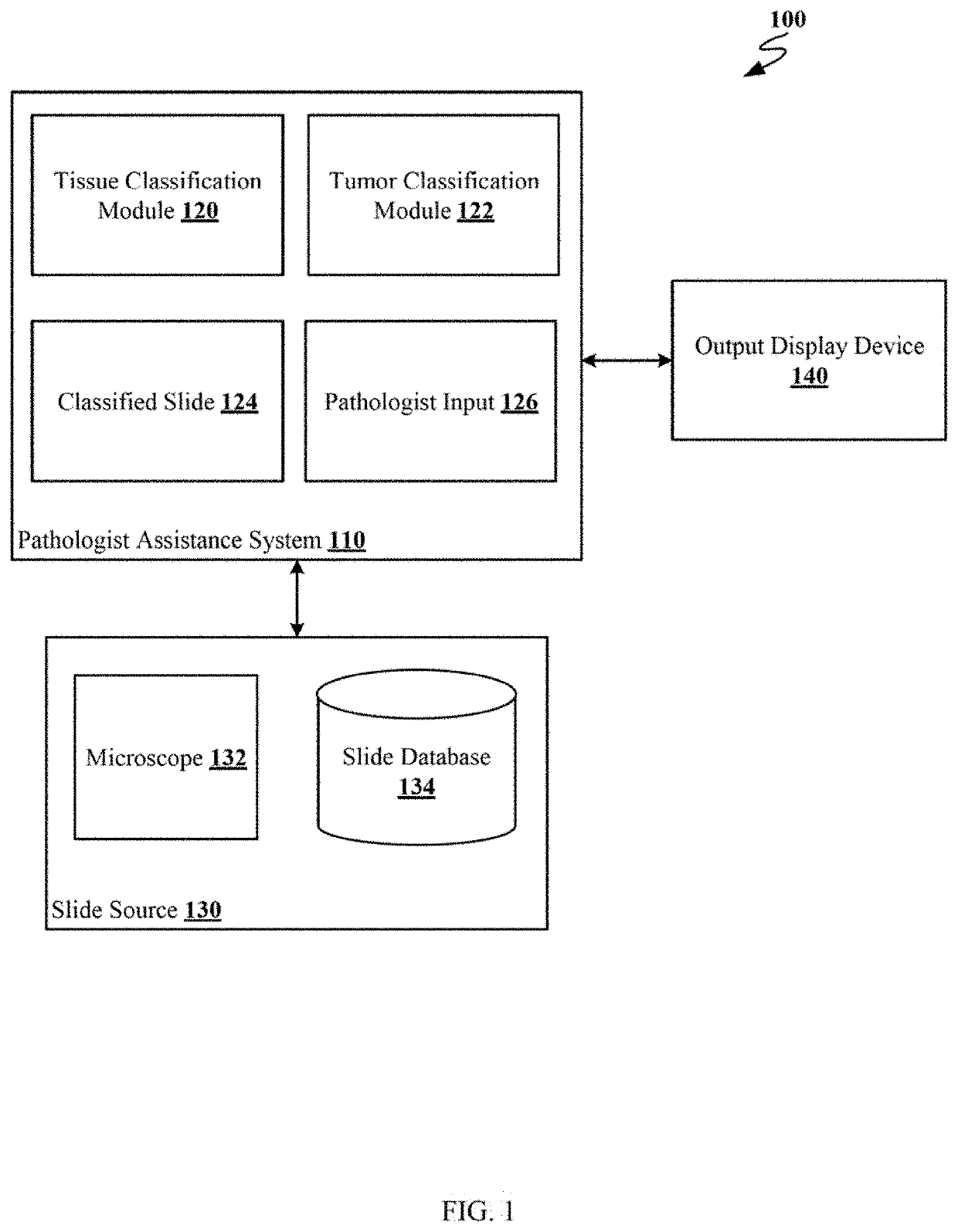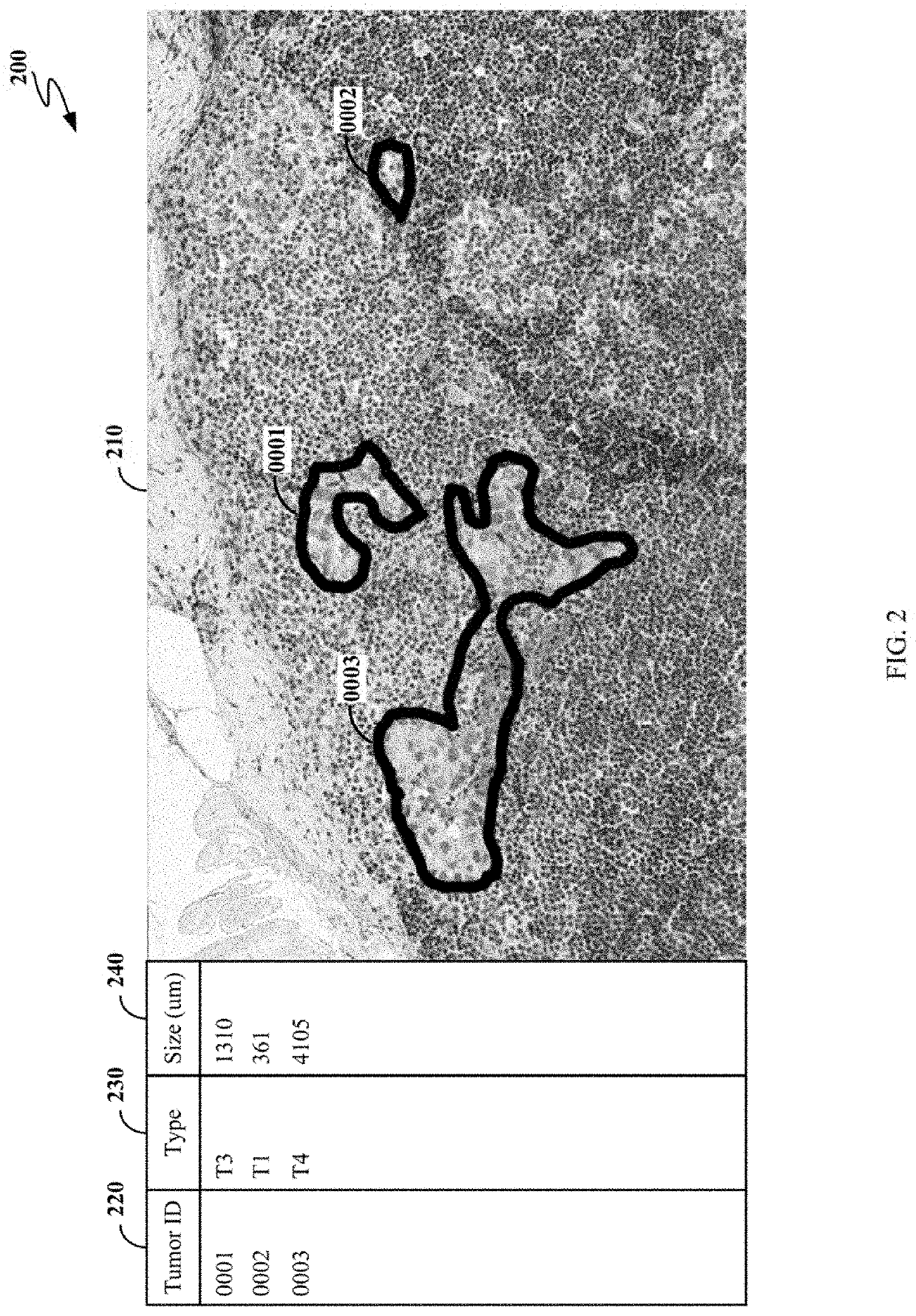System for automatic tumor detection and classification
a tumor detection and automatic technology, applied in the field of machine learning, can solve the problems of time-consuming and intensive pathology, a large amount of time for the slides representing one tissue, and the process of diagnosis for a particular slide containing potentially cancerous tissue is time-consuming and intensive for pathologists performing diagnosis,
- Summary
- Abstract
- Description
- Claims
- Application Information
AI Technical Summary
Benefits of technology
Problems solved by technology
Method used
Image
Examples
Embodiment Construction
[0014]FIG. 1 depicts an example computing environment 100 for the automatic detection and classification of tumors. As shown, computing environment 100 includes pathologist assistance system 110, slide source 130 and output display device 140. Although shown as separate entities, in other examples the functions of pathologist assistance system 110, slide source 130 and output display device 140 may be performed by a single computing device or by a distributed computing system. In other embodiments, pathologist assistance system 110, slide source 130 and output display device 140 may be connected via a network such as, for example, a local area network (LAN), a wide area network (WAN) or the Internet.
[0015]Pathologist assistance system 110 is a computing device comprising at least a processor and a memory, capable of executing software resident in the memory by the processor. Pathologist assistance system 110 includes tissue classification module 120, tumor classification module 122,...
PUM
 Login to View More
Login to View More Abstract
Description
Claims
Application Information
 Login to View More
Login to View More - R&D
- Intellectual Property
- Life Sciences
- Materials
- Tech Scout
- Unparalleled Data Quality
- Higher Quality Content
- 60% Fewer Hallucinations
Browse by: Latest US Patents, China's latest patents, Technical Efficacy Thesaurus, Application Domain, Technology Topic, Popular Technical Reports.
© 2025 PatSnap. All rights reserved.Legal|Privacy policy|Modern Slavery Act Transparency Statement|Sitemap|About US| Contact US: help@patsnap.com



